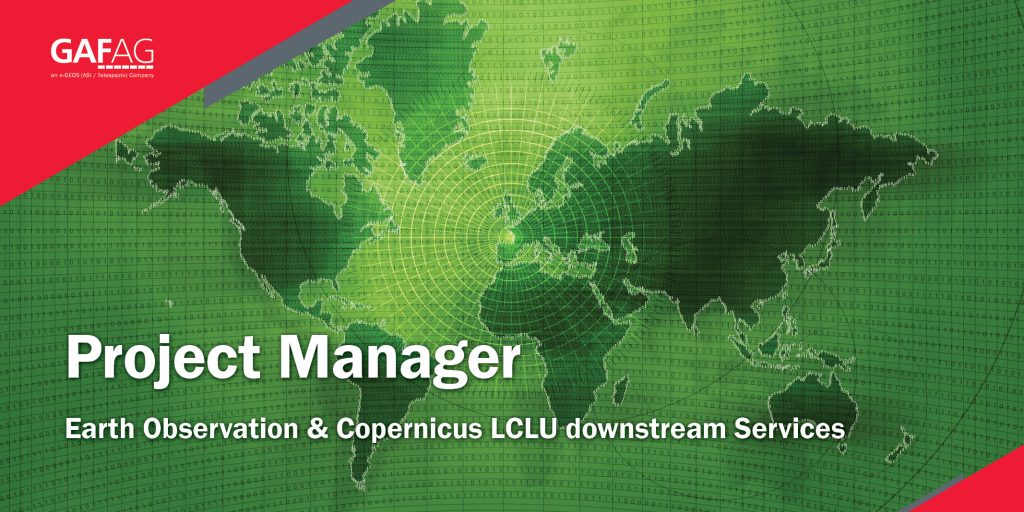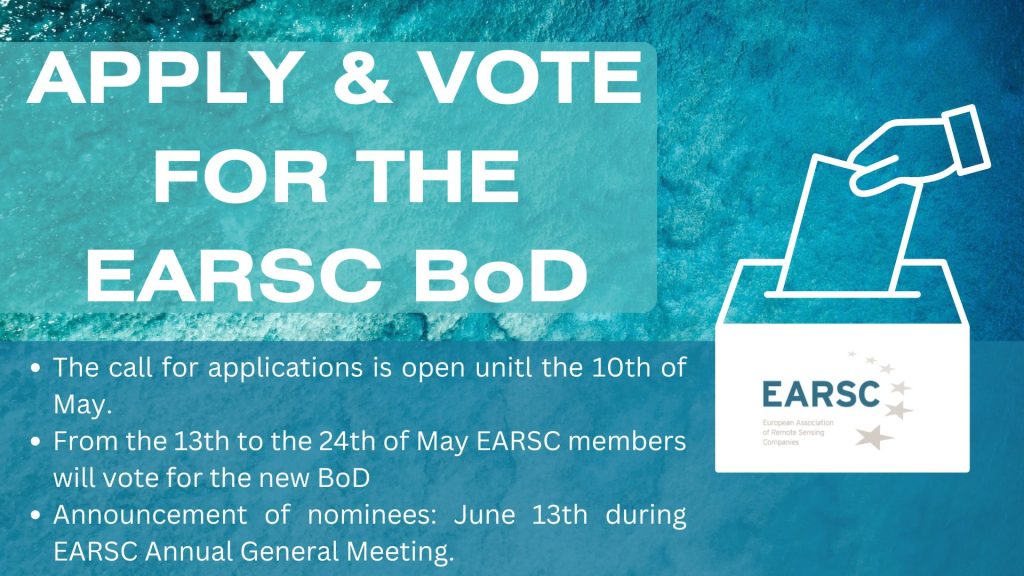
The voice of the Earth Observation
Industry
Barents bloom, Sentinel-2A - processed by ESA, CC BY-SA 3.0 IGO

Discover the largest European
Earth Observation Network
Lake Balkhash, Kazakhastan, Sentinel 2 - processed by ESA, CC BY-SA 3.0 IGO

EARSC promotes the understanding
of our Planet for societal benefits
Brussels, Spot 5 Sqtellite - Airbus Defence and Space
EARSC 4 Pillars
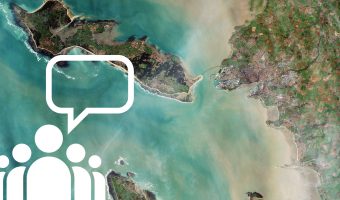
Representing the Members
The core pillar of our activities is to support and promote our members. We achieve this goal mainly through projects which we undertake (see projects). Members’ views are gathered through a series of ad-hoc working groups dedicated to important topics. We inform our members through a monthly report and a dedicated portal about important news and information, as announced bid opportunities – and dedicated e-mails for key items.
Read More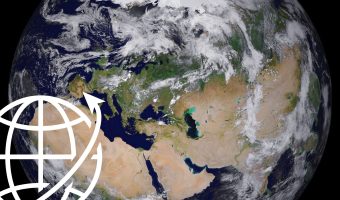
Market development & Internationalization
EARSC is engaged in a wide range of activities to develop new markets and business opportunities for our members. Our strategy is to engage users, identify needs and stimulate demand for European EO services both in Europe and abroad with complementary commercial and geographical approaches.
Read More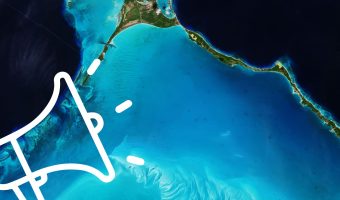
Promoting the industry
EARSC employs a range of sophisticated digital tools to promote the European EO sector. EARSC has three main digital tools which cover creating a shared vocabulary (EARSC TAXONOMY) , providing a common space to find EO companies, and a common space to discover ‘online’ EO services.
Read More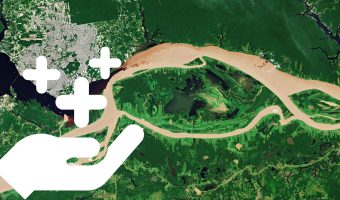
Showing the value of Earth Observation
The Earth observation sector delivers a wide range of social and environmental and economic benefits to citizens of Europe and the world. To properly and consistently value these impacts, EARSC leads the Sentinel Benefits Study (SeBS) project in which we measure the total societal impact of products and services coming from Sentinel satellite data.
Read MoreEARSC NEWS
Europe Launching Sat Observation System
Europe’s plans to become a space power will see it install a fully-functioning global observation system consisting of 30 satellites by 2014. This system, known as Global Monitoring for Environment and Security (GMES), will supply the EU with independent environment, climate change and security information reducing the bloc’s dependence on outside sources for information. Once
FP7 Information and Networking day
This is a reminder about our main Information and Networking Day which is organised in Prague on 21 May 2007 by the Information Society and Media Directorate-General with the kind support of the Ministry of the Environment and the Technology Centre of the Academy of Sciences of the Czech Republic. The focus is this event
GMES Conference in Munich
Within the framework of the German EU Presidency, a conference on the European initiative Global Monitoring for Environment and Security (GMES) is taking place on Tuesday 2007-04-17 in Munich. Together with Commission Vice-President G¸nter Verheugen the Federal Minister of Transport Wolfgang Tiefensee opened the conference titled The Way to the European Earth Observation System GMES
Bridging the gap between Space and Local and Regional Users
Future Challenges for Local and Regional Authorities: How can Space Technology help?, to be held on 29-30 May 2007 in Barcelona, Spain. The aim of the Eurisy programme dedicated to Local and Regional Authorities is to facilitate the use by European regions and cities of the existing services providing solutions to some of the challenges
New Satellite Coverage for Natural Disasters
The NOAA administrator and the Brazilian ambassador to the United States, joined by dignitaries from Argentina and Brazil, will host a news conference to announce the successful repositioning of a NOAA environmental monitoring and weather observing satellite. South Americans and many millions of other people in the Western Hemisphere will benefit from the shift, which
Govt needs satellite rethink / Plight of Radar No. 1
Keiko Chino / Yomiuri Shimbun Senior Writer One of the government’s four intelligence-gathering satellites has ceased to operate due to a breakdown of its power source, bringing to light many problems that have to be addressed. An official of the Cabinet Satellite Intelligence Center said while the center has not given up trying to reestablish
Germany Hopes To Unveil EU Space Policy
Despite recent setbacks and a two-year delay in getting an agreement among members, the European Union appears ready to unveil what kind of collective space policy its 27 member nations should pursue. Germany aims to show the first-time European space strategy before its six-month term as EU president expires in July. Though mainly geared to
ISRO To Focus On Societal Projects
India’s space agency will step up investment in projects with societal applications to account for 20 per cent of its budget. It looks to contribute its expertise to interlink rivers and expand the network for telemedicine, tele-education and village resource centres. Indian Space Research Organisation (ISRO) Chairman G Madhavan Nair said that the budget for
USGS Defines Roles for New Satellite Mission
Scientists and engineers from the Department of the Interior’s U.S. Geological Survey (USGS) and NASA are moving forward in planning a successor to the Landsat 7 satellite mission. With the Landsat Data Continuity Mission (LDCM) satellite expected to launch in 2011, the two agencies have announced their roles and responsibilities in mission development, subsystems procurement,
IAF joins project to protect World Heritage sites
The joint ESA/UNESCO Open Initiative to conserve hundreds of natural and cultural World Heritage sites using Earth observation satellites gets additional backing as the International Astronautical Federation joins the growing number of space entities to pledge support to the project. The Open Initiative, agreed upon by ESA and UNESCO (United Nations Educational, Scientific and Cultural
Europe and Russia confirm closer space cooperation
Europe and Russia are strengthening their cooperation in space. The Head of the Federal Space Agency of the Russian Federation (Roscosmos), Anatoly Perminov, ESA Director General, Jean-Jacques Dordain, and European Commission Director General Heinz Zourek met today at Roscosmos in Moscow within the framework of the Tripartite Space Dialogue between the European Commission, European Space Agency and Roscosmos. (Source ESA)
Sinequanet Workshop – March 28, 2007, ESA-ESRIN
Space Intelligence Engineering & Quality Network (Source SINEQUANET)
MEMBERS NEWS


